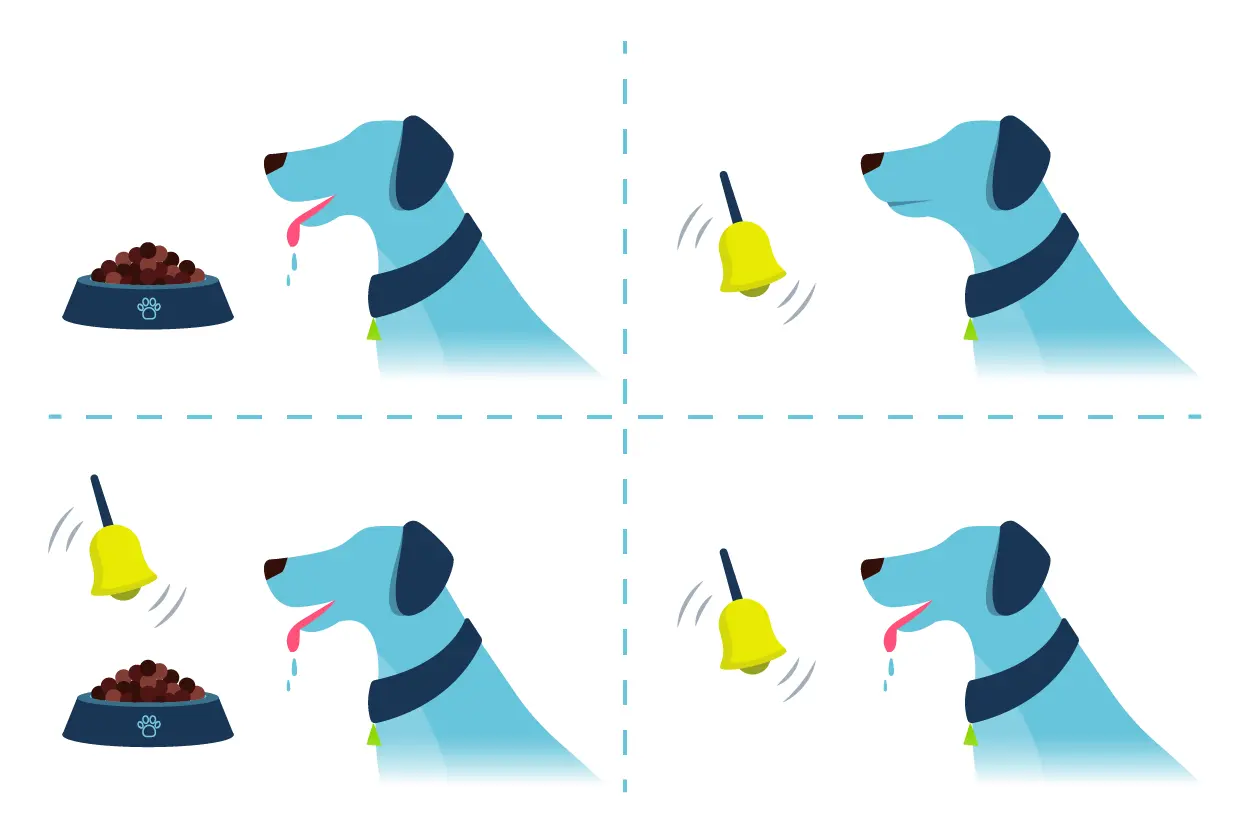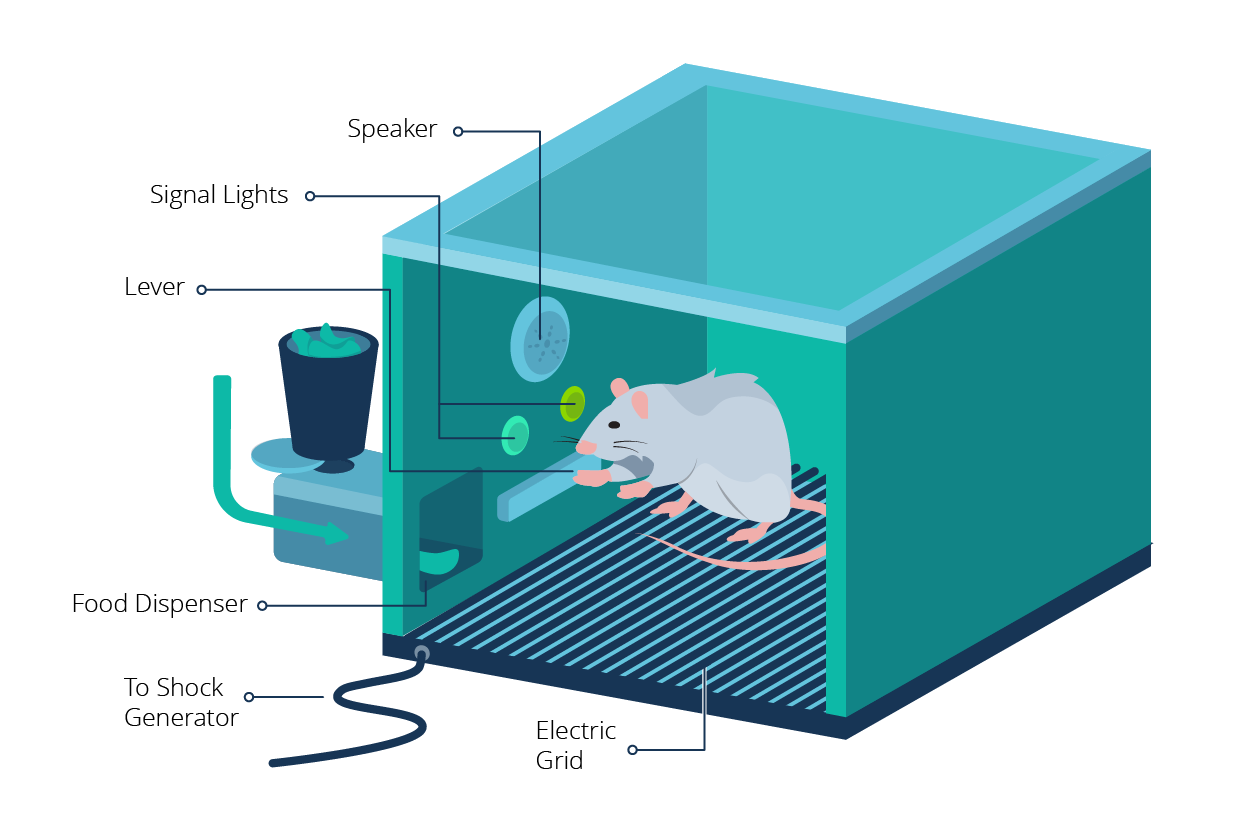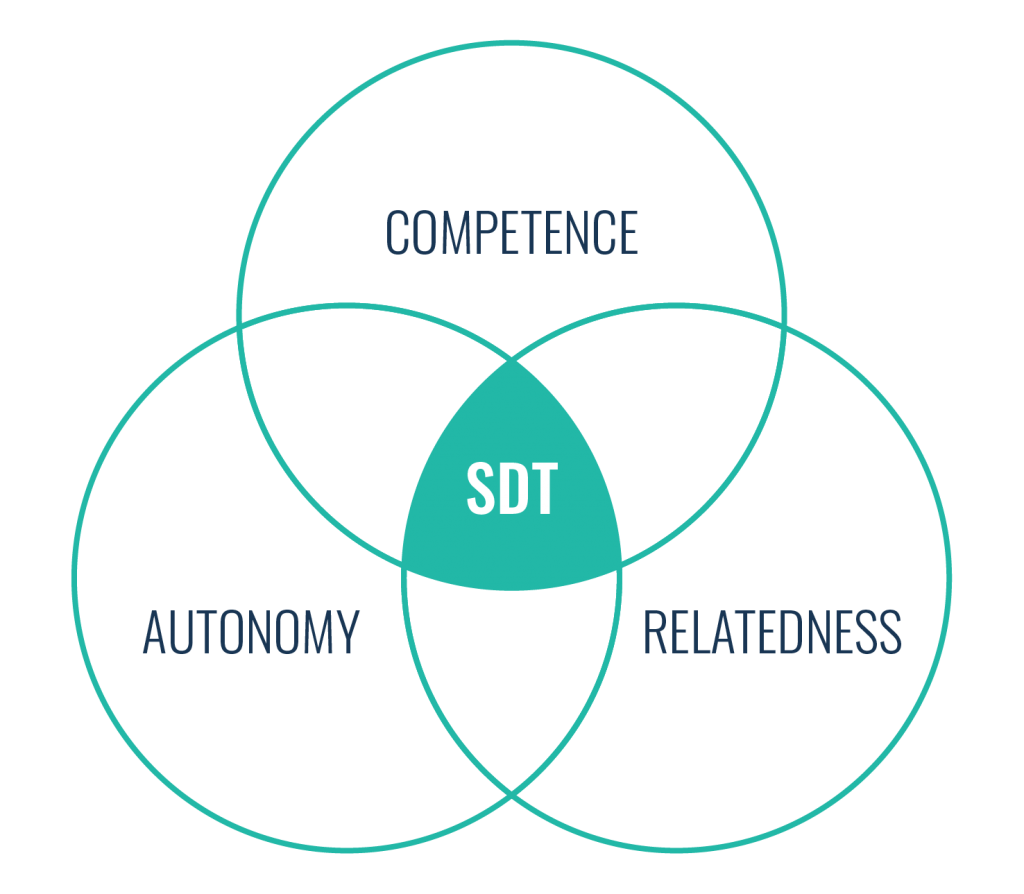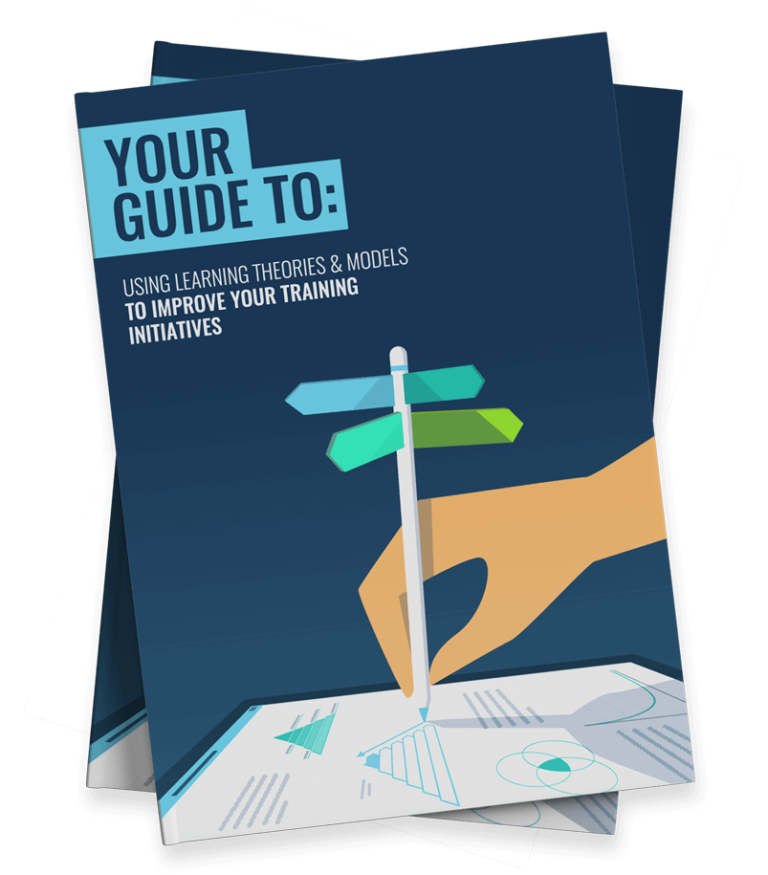
The world around us is constantly teaching us, whether intentionally or not. Behavioral learning theory examines how interacting with our environment moulds our actions.
From classic experiments with salivating dogs to modern-day applications in the classroom and workplace, this learning theory provides a powerful lens for understanding how we learn.
Do you remember the excitement buzzing through class when your teacher promised a pizza party if everyone behaved well? Perhaps you remember the nervous tension when they warned of detention if the talking didn’t stop. These are both moments of behavioral learning theory in action.
Behavioral learning theory suggests that the way we act is a direct result of what we’ve learned through our experiences. This learning happens through conditioning, where our behaviors are either encouraged through positive reinforcement, or discouraged by negative reinforcement.
In other words, our actions aren’t random. The world around us shapes them. As B. F. Skinner puts it, ‘The consequences of an act affect the probability of its occuring again’.
This begs a question. How can we apply behavioral learning theory in an learning and development (L&D) context?
That’s the focus of this article. You’ll discover how rewards and consequences subtly shape our actions, explore the groundbreaking experiments of Pavlov and Skinner and consider the limitations of this influential theory.
Ready for a little mental reconditioning? Let’s go!
What is Behaviorism?
Behaviorism as a theory is largely responsible for people recognising psychology as a scientific discipline. For this, we can thank John B. Watson, who’s commonly known as the father of Behaviorism.
After all, he kickstarted the movement with his 1913 article titled, ‘Psychology as the behaviorist views it’. He argued that an unbiased study of the mind wasn’t possible. As such, he shifted his focus to observable behavior.
Behaviorists like John B. Watson focus on what can be seen and measured, rather than internal mental states. Whilst this strips some of the complexity out of human action (and inaction), it’s easy to appreciate the focus on measurable outcomes.
This is the basis of therapeutic techniques like systematic desensitization and exposure therapy. Behaviorism also plays an important role in animal training, advertising and habit formation. Behavioral learning theory is the specific set of principles that describe how learning occurs within this framework.
Pavlov’s Dog Experiment
You may be familiar with Pavlov’s dog experiment. Ivan Pavlov’s highly-influential study is a cornerstone of behavioral learning theory. However, Pavlov wasn’t studying how we learn. He was actually researching dog digestion.
Working back in the 1890s, he noticed something strange: his dogs would start salivating even before they were presented with food. They were reacting to the assistants who brought them their dinner, or even just the sight of their food bowls.
This is an example of classical conditioning. An unconditioned stimulus (e.g. food) produces a natural response. In this case, this was the dog’s salivation. It then becomes associated with something that has nothing to do with the food (the assistant).

This accidental discovery sparked Pavlov’s curiosity. For his experiment, he introduced a neutral stimulus. In this case it was a metronome, which produces no response on its own.
Pavlov then rang the metronome and then immediately presented food to his dogs. Through repeated pairings, a learned association formed in the dogs’ brains between the metronome and their food. As a result, his dogs began salivating even when the metronome was the sole stimulus present.
Of the results, Pavlov wrote: “We observed that, after several repetitions of the combined stimulation, the sounds of the metronome had acquired the property of stimulating salivary secretion.”
This metronome (or bell) experiment is well known. However, did you know that Pavlov also discovered that dogs could learn to salivate at the sight of a black square? Such is the power of classical conditioning.
Pavlov’s experiments show us that we can be conditioned to automatically respond to a stimulus that was previously neutral if it’s repeatedly associated with something that naturally triggers a response. This is behaviorist catnip, as it’s an example of our environment shaping our actions.
Skinner’s Box
B. F. Skinner was a leading figure in American psychology and behaviorism. His experiments show that you can use both reinforcement (to increase a behavior) and punishment (to decrease a behavior) in order to influence to actions of others.
This is typified by Skinner’s Box experiment. Back in 1948, he create small soundproof chambers designed for animal experiments. These contained simple mechanisms for delivering rewards and punishments, such as levers, food dispensers and electrical currents.

He then studied and manipulated the animal’s behaviors using operant conditioning. This differs from Pavlov’s approach, which focuses on reflexive responses (like salivation), by instead examining how voluntary behaviors (such as choosing a specific lever) are shaped by consequences.
Indeed, by controlling the consequences of the animal’s actions, Skinner could examine how behaviors are reinforced or extinguished. He also noted that the timing and frequency of reinforcement influence how fast an animal learns.
Whilst rats were often used due to their easy handling and quick learning capabilities, Skinner also used pigeons to surprising effect. He was able to train them to perform complex tasks, like playing ping pong or guiding missiles during World War II.
Experiments like Pavlov’s dogs and Skinner’s Box reveal the consequences of certain actions or behaviors. But how does this fit into our learning approaches today? Let’s take a look.
Behavioral Learning Theory Today
While constructivism and other educational theories are favoured now, behaviorism still informs classroom management systems (based on reward and consequence), incentive structures and performance-based rewards.
After all, it’s true that learners are more likely to repeat actions that lead to desirable outcomes. A good grade on a test acts as positive reinforcement, encouraging them to maintain their study habits. Conversely, a bad grade can act as a punishment, motivating a change in strategy.
Furthermore, understanding reinforcement schedules, spaced repetition and how to shape behavior is at the core of many self-help strategies for changing bad habits or adopting new ones.
Notably, reinforcement learning plays a key role in training artificial intelligence (AI) systems. In these cases, the system learns through trial and error, maximising rewards over time.
With all this in mind, let’s explore how behavioral principles can inform online learning approaches and learning systems.
10 Behavioral Learning Principles to Apply To Your Learning Environment

Thanks to learning technology, you can now easily weave behavioral learning theory into your training programmes. You simply need to reinforce the desired behaviors while actively discouraging unwanted ones, such as avoiding learning.
We must also take care to do this ethically. After all, your learners aren’t rats in a cage. They’re knowledge-hungry individuals who want to make a real impact.
We prioritise positive reinforcement in our workplace learning programmes. This creates a more engaging and productive learning experience, benefitting both the individual and the organisation.
For instance, many learning management systems and learning apps empower you to use gamification to reinforce certain behaviors. This is where game mechanics are applied to non-gaming environments to incentivise certain actions.
Incentive-based programmes have been shown to generate a 22% increase in workplace performance. Additionally, positive reinforcement encourages repeated behaviors. This makes it easier for learners to return to your platform again and again.
Let’s explore some easy-to-implement examples of positive reinforcement you can use to support your learners:
- Badges: Reward your learners with virtual Badges for completing content or interacting with your learning platform or social communities. They work well as a form of positive reinforcement because they fuel a sense of achievement.
- Experience Points (XP): As your learners consume training content, they should also collect Experience Points. This helps them to visualise their progress. These points can also be used as part of a level system within your learning platform.
- Leaderboards: These boards provide a break down of the top performers on your learning platform. They show you who has collected the most Badges, or earned the most XP. This is a great way to recognise your most committed learners.
- Streaks: This game mechanic cleverly uses both positive reinforcement (the satisfaction of maintaining a streak) and negative reinforcement (the desire to avoid losing that streak). This sense of loss aversion can be a strong motivator.
- Social Streams: Adopting a social learning approach can generate new positive reinforcement opportunities. After all, discussion forums provide a chance to see each other’s work and get feedback from your peers.
- Contests: Learner-vs-learner quiz showdowns provide an opportunity for learners to test their mettle and prove their subject matter mastery. The competitive element and the potential to win or lose can increase focus and effort.
- Feedback: Your learning platform provides you with ample opportunity to share both positive and constructive feedback with your learners. This can be delivered via quizzes, assessments, microunits and discussion forums (where relevant).
- Recognition: These same channels provide a great way to celebrate your top learners. Publicly recognising your top ranked learners in your company newsletter can be a powerful motivator, which may encourage others to work harder.
- Adaptive Difficulty: Your learning system should automatically adjust the challenge level based on the learner’s performance. This ensures that each learning task is challenging enough to feel meaningful and rewarding.
- Push Notifications: Reminders or notifications can be powerful nudges, subtly encouraging learners to take action and stay on track. This highlights how the design of your learning platform can directly influence behavior.
Criticisms of Behavioral Learning Theory
As with any learning theory, there are a few things to be cautious of when integrating a behaviorism-backed approach into your training programmes. Few psychologists today are strict behaviorists. Modern psychology recognises it as one piece of a much larger puzzle of how we learn.
After all, behavioral learning theory rather oversimplifies things. For a start, it completely ignores our internal process (hello, cognitivists!). This theory neglects the role of thoughts, emotions and mental processes in shaping our actions.
Behaviorism also minimizes the impact of genetics, brain development, and inherited predispositions on how readily we learn certain behaviors.

It also grants a lot of power to teachers, instructors and learning platforms at the expense of the learner themselves. After all, they design training paths, monitor progress and provide feedback. They’re in control of the reinforcement levers that help to drive activity.
In other words, you’re effectively removing agency from your learners. This lack of autonomy can be damaging. Nobody wants to feel like a pigeon forced to learn ping pong.
According to Self-Determination Theory, autonomy is one of three psychological needs that motivate human action. If learners feel they don’t have any control over their own lives, they’re more likely to become disengaged.
Gallup found that disengaged employees have ‘miserable work experiences and spread their unhappiness to their colleagues’. Indeed, disengaged employees cost the UK economy £340 billion every year in lost training and recruitment costs.
How to Combat the Problem
To combat the issues with behavioral learning theory, we recommend imbuing your training programmes with epic meaning. This means creating a sense of purpose within your learning platform and making employees feel like their work matters.
McKinsey found that a staggering 70% of employees say that their work defines their sense of purpose. In addition, 70% of business executives say that when employees embrace the company mission it boosts productivity ‘to a great extent’. Coincidence? We think not!
Be sure to come up with an engaging theme for your learning platform and tie your employees’ training goals to company-wide objectives. Align your learning to your values and your learners won’t feel like they’re being forced down a particular learning pathway.
As a result, employees will feel more of a personal stake in their training. This increases their sense of autonomy, thereby helping to increase engagement levels. And did you know that highly engaged teams show 21% greater profitability?
Final Words
Behavioral learning theory offers a unique lens for understanding how our environment shapes us. While a complete picture of human learning requires a broader approach, behavioral principles remain relevant — even to this day!
The key is to apply these principles ethically, always respecting learner agency and recognising the influence of individual differences.
Thankfully, there are a variety of levers you can pull to achieve these ends. Don’t underestimate the power of feedback, notifications, and a touch of healthy competition. Game mechanics are also effective at sparking learner activity and engagement.
Strike the right balance and you’ll create a learning programme that’s both effective and ethical. Good luck!
Ready to elevate your teaching and training? Don’t miss out on the essential guide to understanding how we learn. Download ‘The Learning Theories & Models You Need to Know‘ now or explore the specific theories below:
- Cognitive Learning Theory
- Constructivist Learning Theory
- Humanistic Learning Theory
- Connectivism Learning Theory









